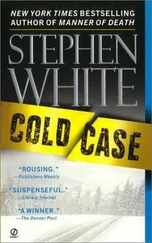The big debate about this car is its electric steering. Because of European Union rules on emissions, manufacturers are under pressure to introduce systems that use less energy, whether or not they are better at the job. So the conventional hydraulic power-steering setup has been ditched in favour of one that works off the battery.
In the same way as Neil Young keeps banging on about the awfulness of digital sound compared with vinyl, various 911 purists say that the classic ‘feel’ of a 911 is now gone. And I’d agree with that. But since I’m not a 911 purist, I must say I think the new system is better. For sure, you are getting an artificial sense of how the tyres are interacting with the road and, yes, on a track you can spot this. But for everyday driving, the electric system is meaty and tremendous.
Emissions regulations have had other effects as well. The engine now shuts down at the lights and Porsche has had to fit a seven-speed gearbox. In theory this is fine. You lope up the motorway at tickover, sipping fuel like a vicar sips sherry. But when you’re in seventh, doing 60 mph, you don’t get the twitching and fizzing you expect from a car of this type. It feels a bit puddingy.
Of course, when you get off the motorway and realize you’re running late and you need to make up some time, it’s not puddingy at all. It’s just delightful. That said, I would opt for the bigger-engined S model. The standard car I drove, while lovely, sometimes didn’t feel as fast as I’d been expecting.
Now normally when I’ve reviewed 911s in the past, I’d get to this point and say that while the car is jolly clever, it’s not for me. The rear-engined Porsche is like Greece and marzipan and Piers Morgan. Simply not my cup of tea.
But this one is different. Over the years, the engine has crept forward in the chassis so that it’s no longer slung behind the rear axle waiting to become a giant pendulum. It’s water-cooled, too, these days, which means the Volkswagen air-cooled clatter is gone.
Inside, the silly buttons that looked like half-sucked boiled sweets and felt about as cheap as an Albanian’s suit have been replaced with good, high-quality items. The driving position is better, the seats are wonderful and though the car is now bigger than ever, it’s still small compared with all its rivals. That’s a good thing.
Drawbacks? Two, as I see it. The boot’s at the front, which means you get dirty fingers every time you open it; and Porsche has never shaken off the City boy braces-and-Bollinger image it earned in the Eighties. Which means you are never, ever, let out of side turnings.
OK. Two and a half. The engine isn’t quite gutsy enough. But go for the S and that’s resolved. In spades. Just avoid the convertibles. Unless you enjoy looking a plonker.
I’m sure there is much that will disappoint the diehard 911 fan in the new effort. But there is so much to delight those of us who have never liked 911s. I could even see myself buying one. It’s a fab car. Really, really fab. And, all things considered, good value as well.
PS: Since finishing this piece, I’ve realized the Porsche actually gets no stars at all because it’s useless. Last Sunday the tyre went flat. There is no spare. And no depot carried anything that would fit.
Recently a friend of mind had a flat tyre in his 911 and it took Porsche two weeks to find a replacement. Unless the manufacturer can address this, there is simply no point buying its cars. Because one day you will need, say, to take your mum to hospital and you will have to phone and cancel.
18 March 2012
I ran into an EU busybody and didn’t feel a thing
BMW 640d (with M Sport package)
After the recent and very sad deaths of six British soldiers in Afghanistan, questions were immediately asked about the worthiness of the Warrior armoured vehicle in which they were travelling when the bomb went off.
And equally immediately they were answered. The Warrior fleet in Afghanistan was upgraded last June at a cost of more than half a million quid a pop, with armour better able to deal with an explosion and improved seating to protect those inside from the shockwave.
The trouble is, of course, that the men who go to war in beach footwear and skirts know full well that this has happened and are now using bigger bombs. This means the Warriors will have to be upgraded again, which will mean more explosives are needed to blow them up. It’s a problem that’s faced military commanders since the dawn of time. And it’s a problem that will never end.
Each time there’s a tragedy, coroners can point the finger of blame. They can accuse defence chiefs of penny-pinching and the engineers who design these vehicles of incompetence. But the reality is very simple. If a bomb is big enough, it will tear through anything. And there’s nothing that can be done to change that.
Or is there? Because the truth is that man is constantly faced with seemingly insurmountable problems, and we have a habit of working out a solution. We devised ways of getting iron to float and to fly. We developed antibiotics to combat disease. We are clever. And nowhere is this truism more evident than in the car industry.
Every year, the European Union erects a set of ecological fuel-saving goalposts through which it demands car makers must pass if they want to continue doing business. And every year the motor manufacturers squeal and whimper and claim it can’t be done. Then they do it. And then the EU responds by moving the goalposts further away.
The most recent move was a big one, and it’s having a profound effect on how cars feel. You may wonder, for instance, why the easy-to-use automatic gearbox is now being ditched so eagerly in favour of a robotized manual system. These gearboxes invariably make town driving jerkier and I hate them with a passion. But an engine sending its power to the wheels through this system uses less fuel than an engine sending its power to the wheels through a torque converter.
And the car makers that are sticking with the traditional auto are now offering a setup with eight speeds. This means the car is constantly changing up or down. It’s very annoying. But with more cogs, the engine has to work less hard. And that means more mpg, which means the oil supplies will last a little longer.
It gets worse. Even Porsche has now started to use electric power steering, which means you only get a digital interpretation of what’s happening up front rather than the real deal.
And then we get to the starter motor. That now has to be the strongest component in many cars because their engines shut down when you stop at a set of lights. Then start again when you want to set off. I don’t know why this irritates me so much, especially as usually you can turn the system off, but it does.
Not half as much, though, as the trend towards dashboard read-outs telling me what gear I should be in. You’re behind a Peugeot on an A-road and are waiting for an opportunity to overtake. This means you are in third. ‘You should be in fifth,’ it says. It’s wrong. It doesn’t know what I’m going to do next. It doesn’t know I’m being delayed by an old man. It even has an opinion on changing down for a corner. ‘Nope,’ it says as you slide it into fourth for a long left. And this is a system you can’t turn off. Unless you have a hammer to hand.
Another effect of the legislation is the trend for engine designers to replace cubic capacity with turbocharging. A turbo engine uses waste exhaust gases to spin a fan, which is then used to force air and fuel into the engine under pressure. Sounds great. But a turbo engine cannot have the immediacy of a free-breather. There has to be a delay between putting your foot down and actually going, as you wait for the exhaust gases to gather enough force to spin that fan.
Читать дальше












